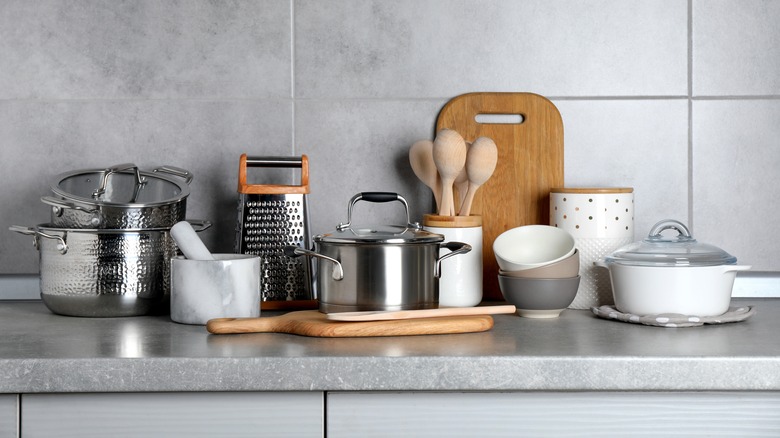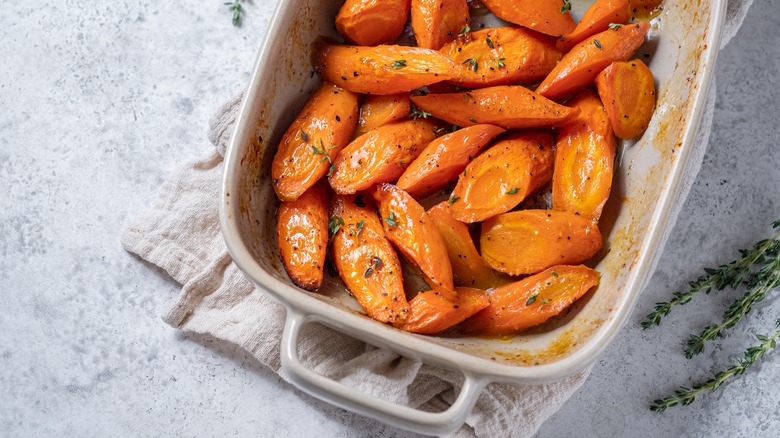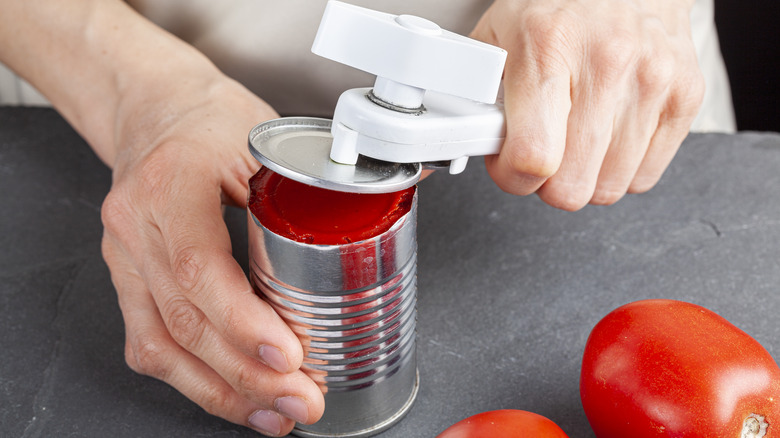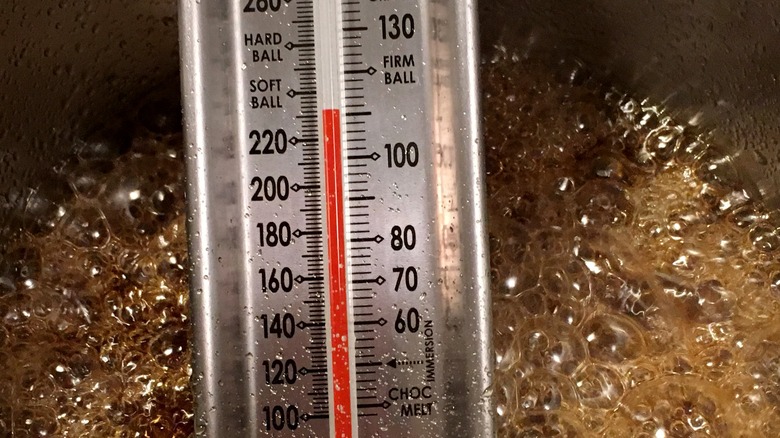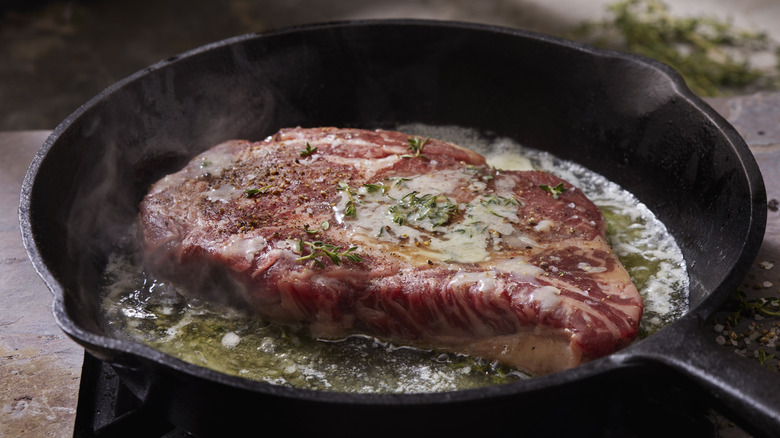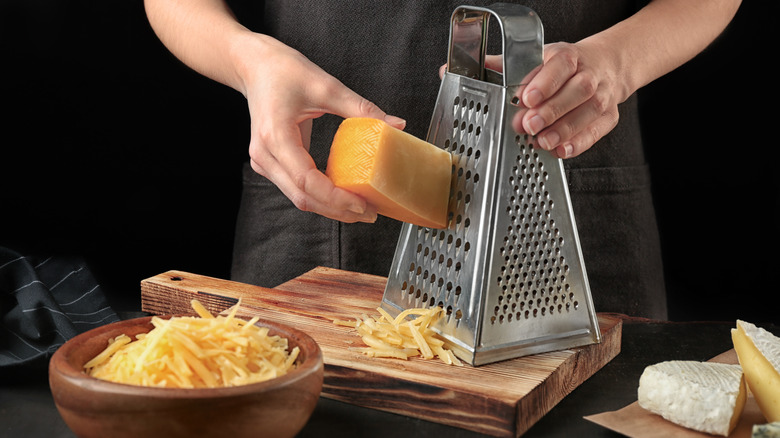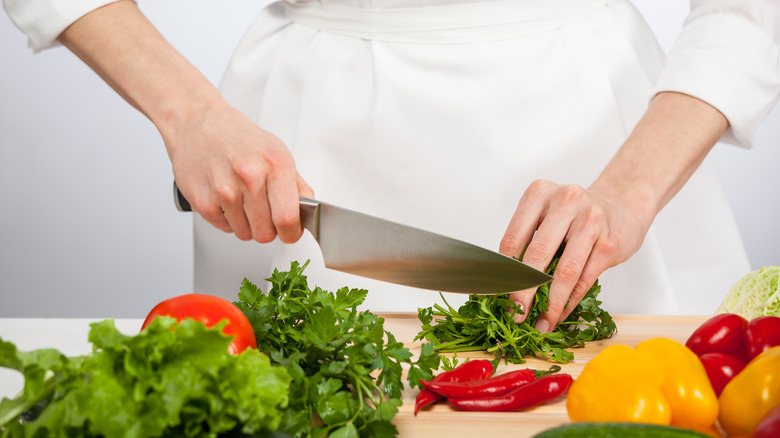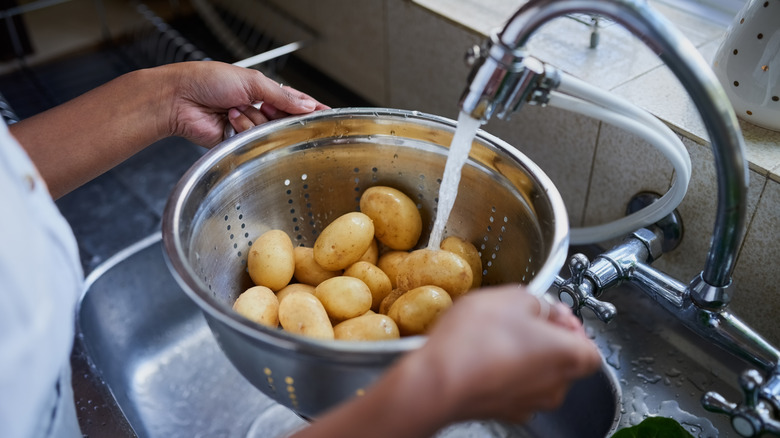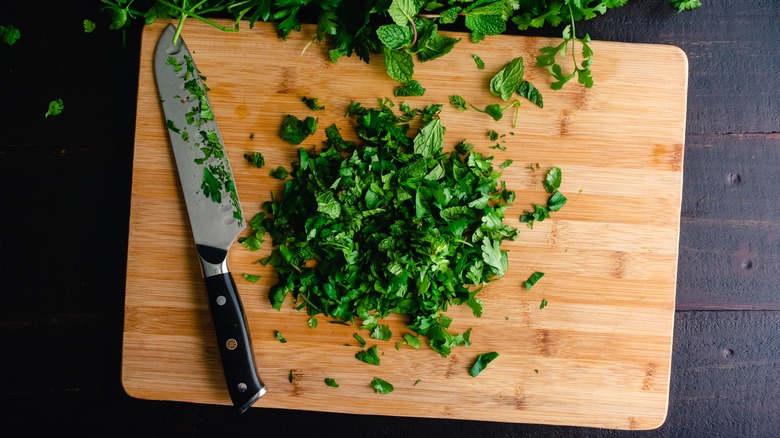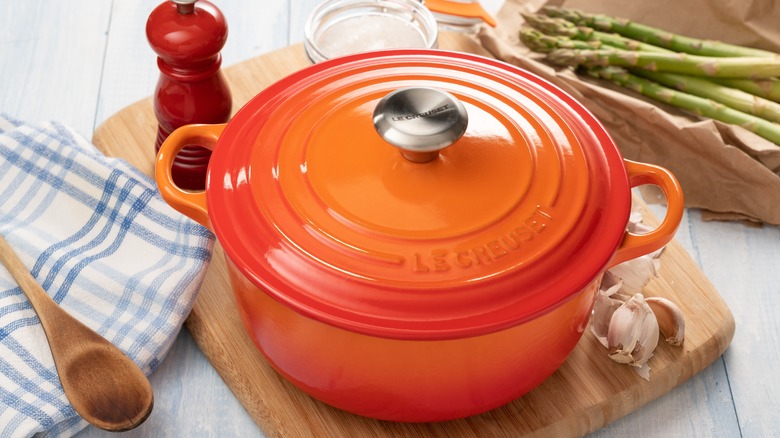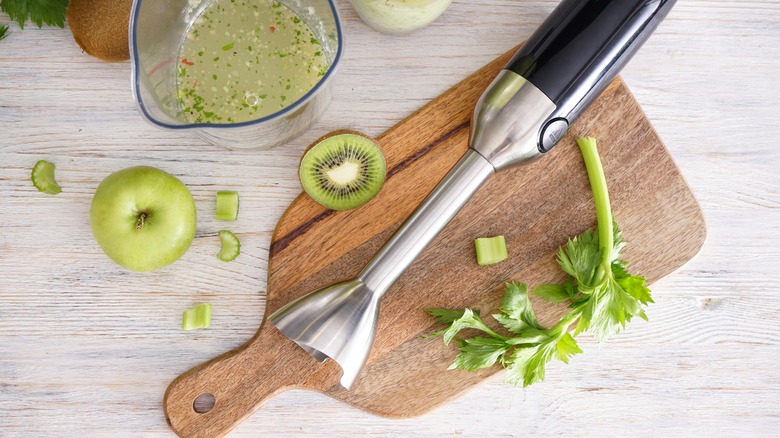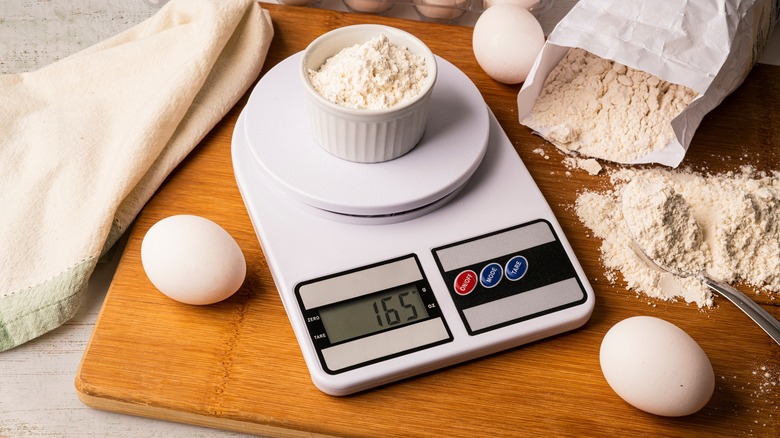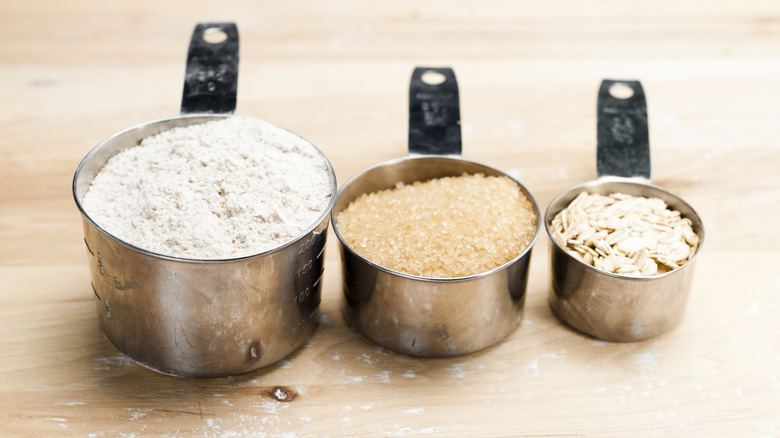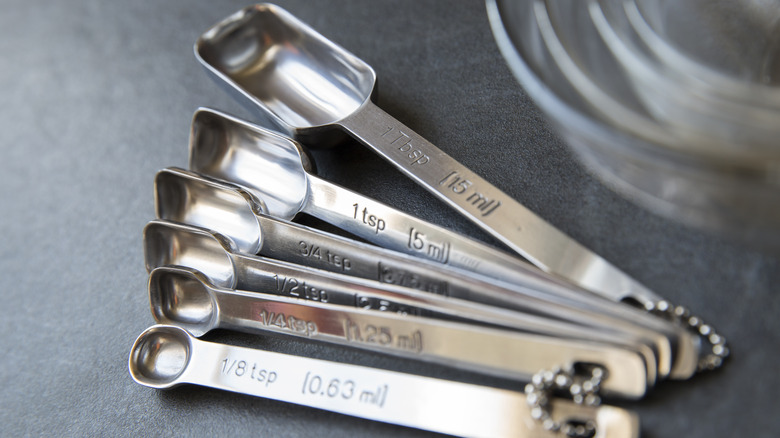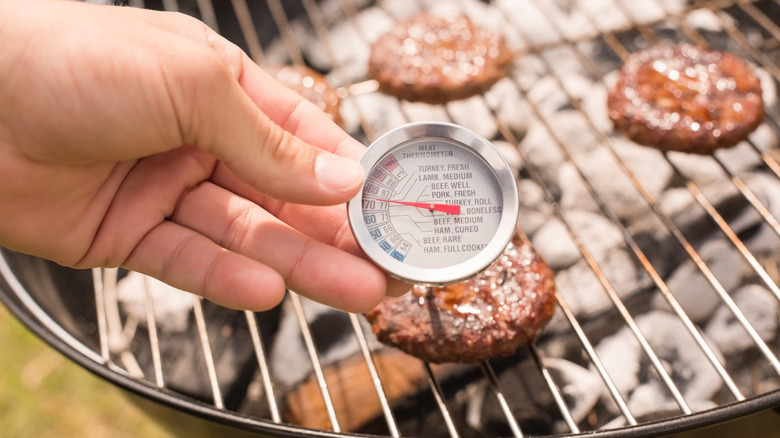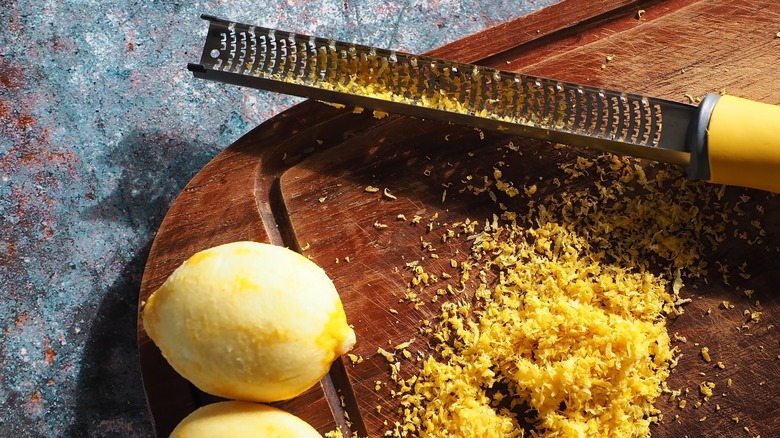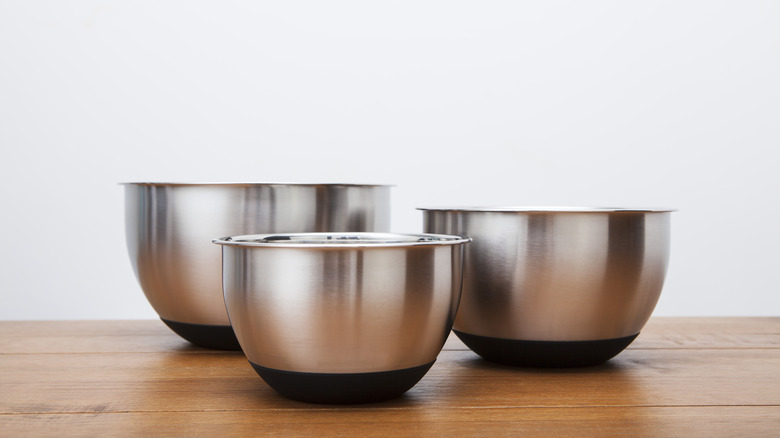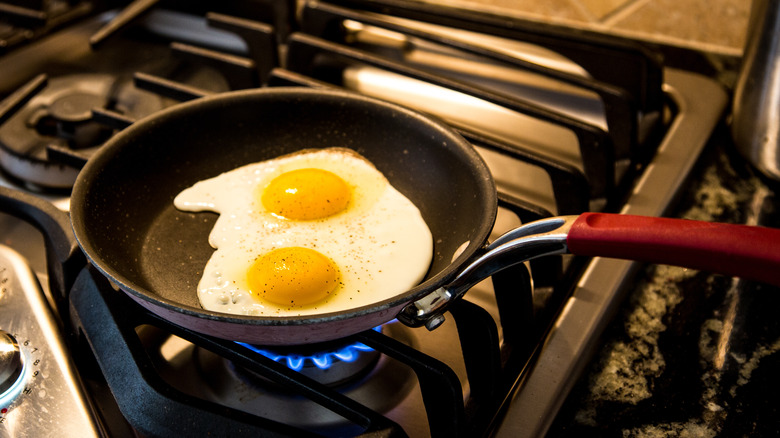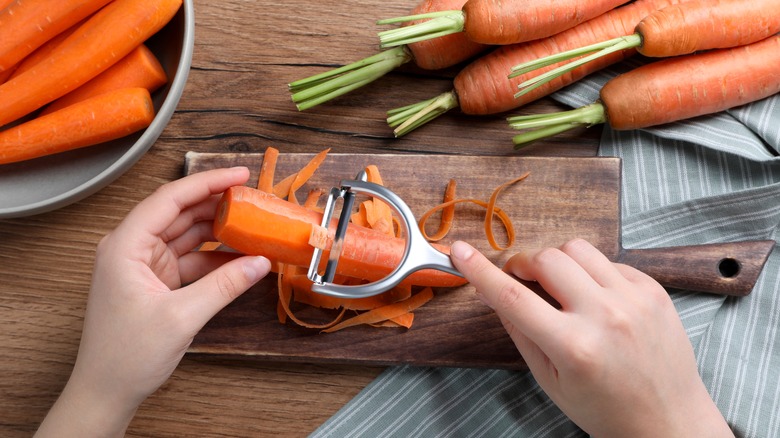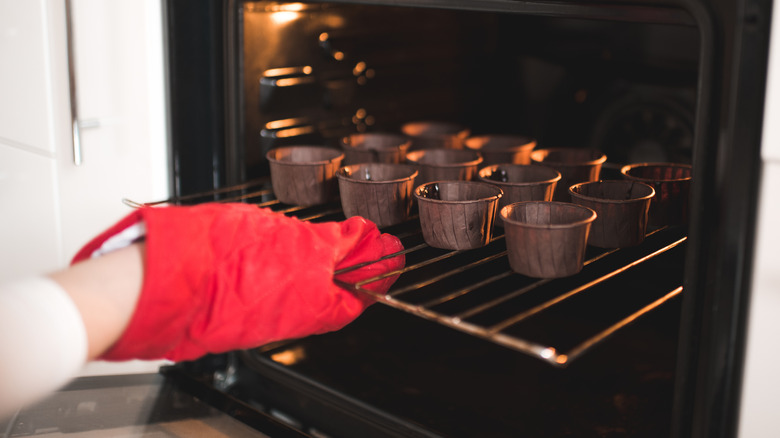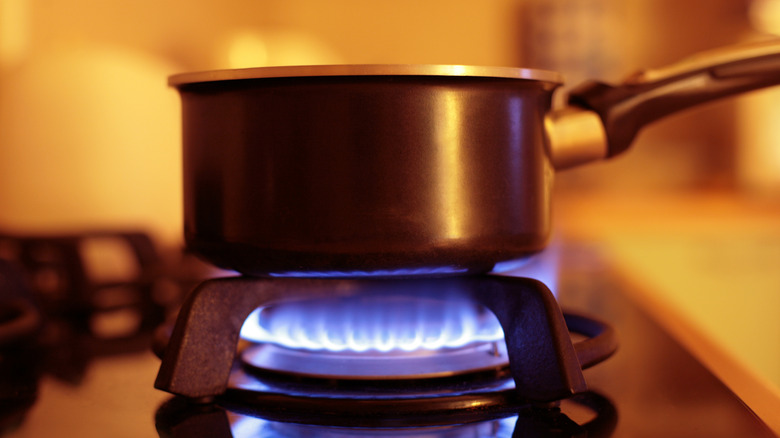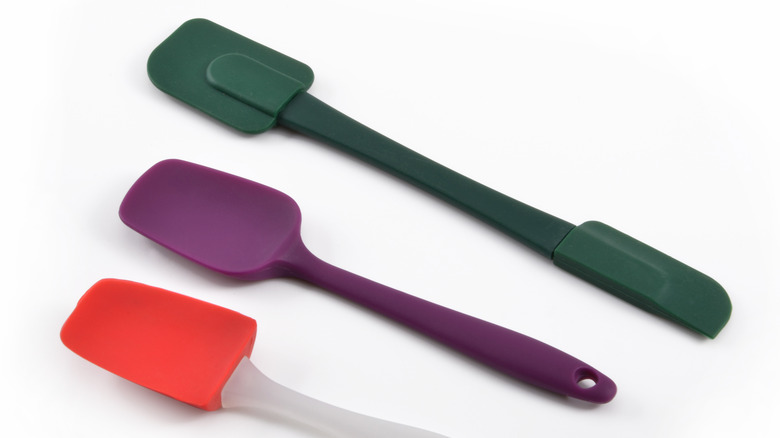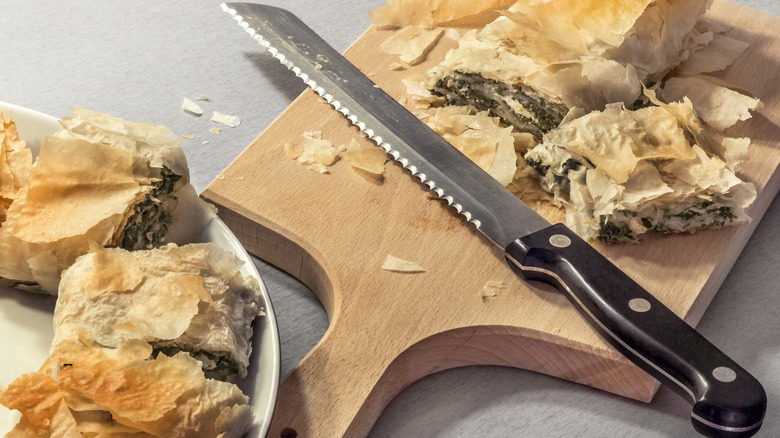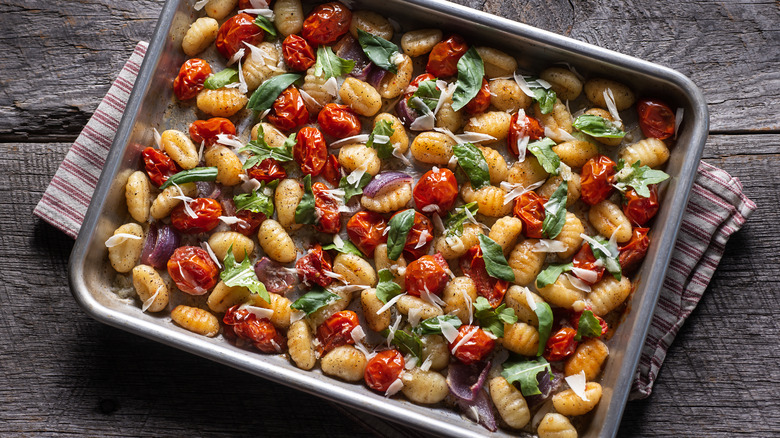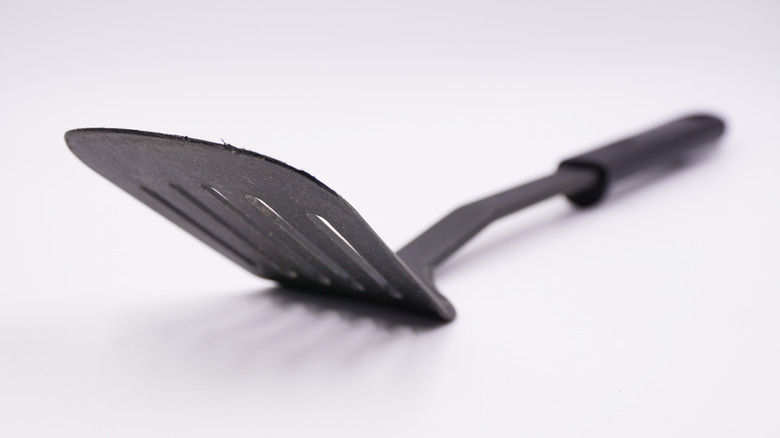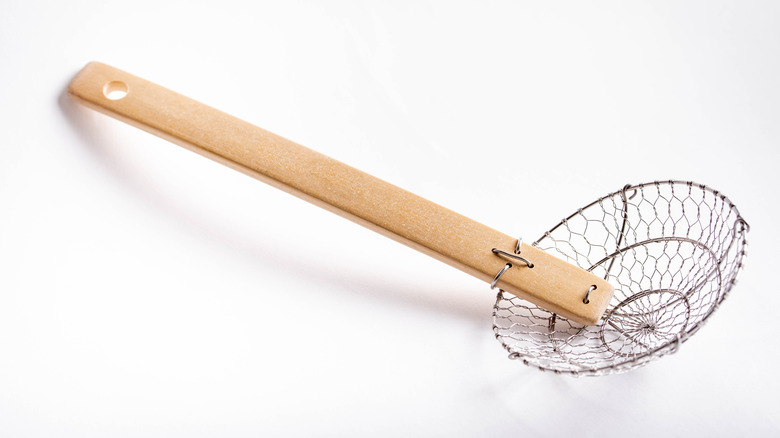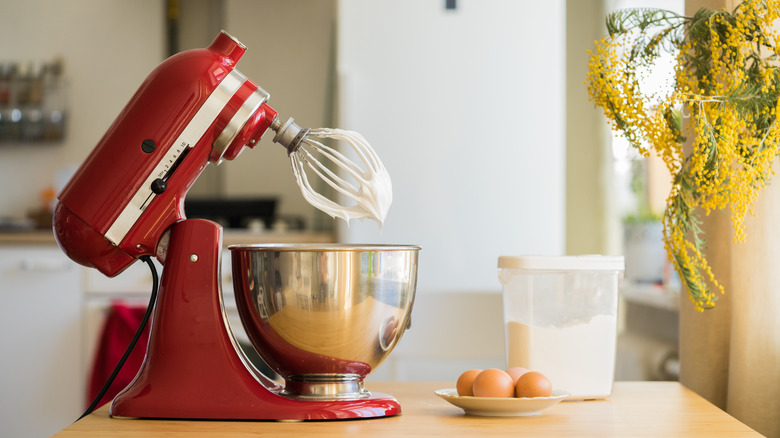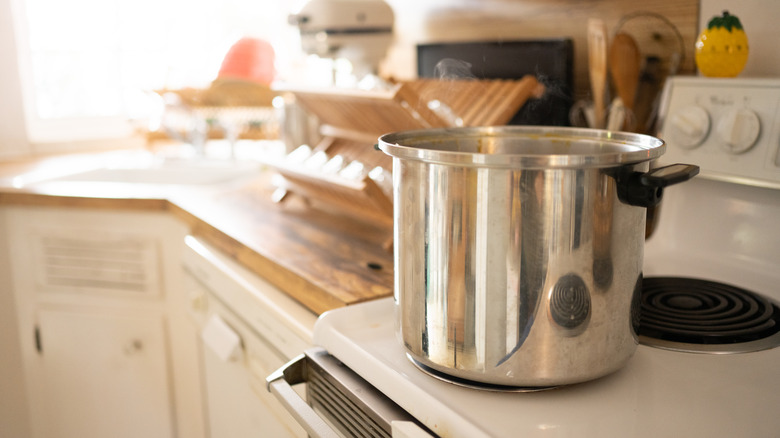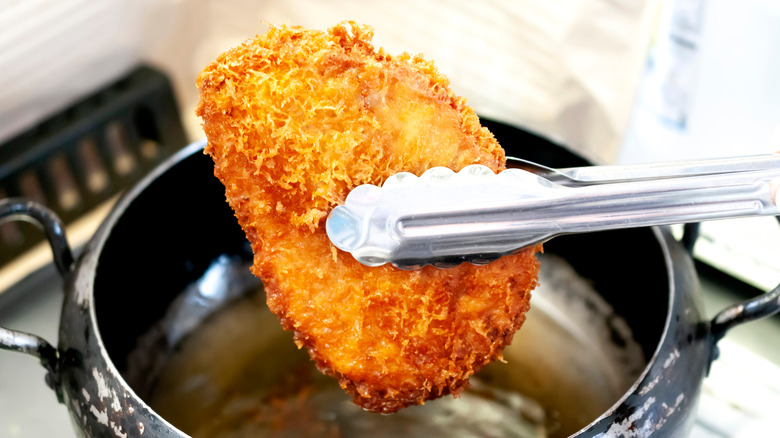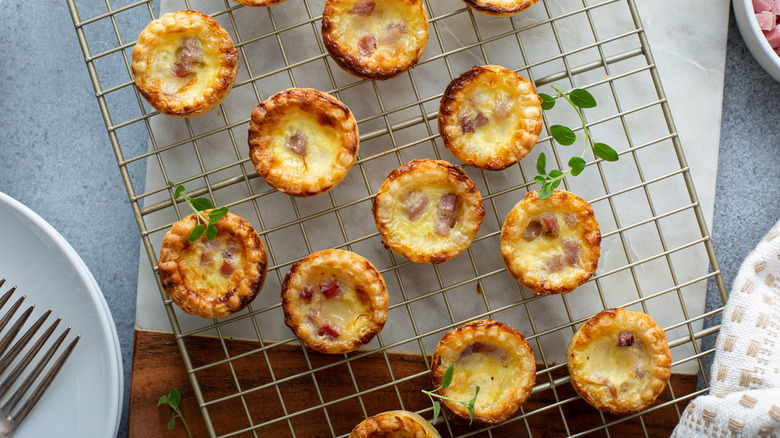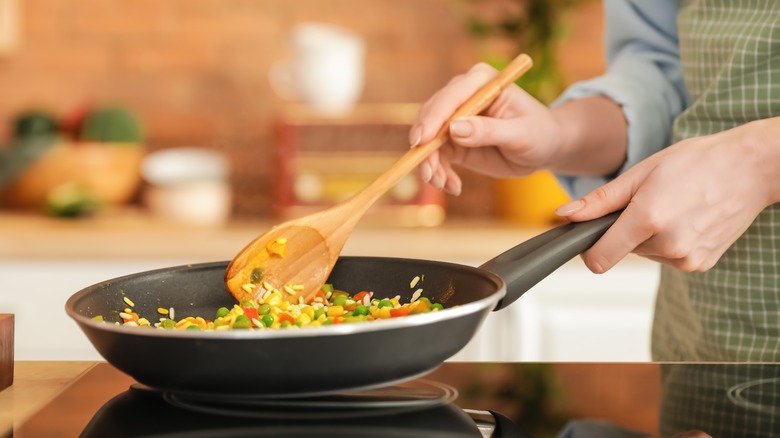30 Essential Kitchen Tools
We may receive a commission on purchases made from links.
We've all been there: You're following a recipe and everything is going well until you get to a certain step and realize you're missing a key piece of equipment. Now you're left with ungrated cheese, unwhipped cream, or unmeasured flour. Without the proper equipment, you might be left to improvise, meaning your meal could be ruined before it even reaches your plate. The best way to prevent this is to make sure your kitchen is properly stocked with all of the essential tools you'll need for any recipe so that you can cook like a professional without anything holding you back.
Here we've compiled 30 items that will cover all of the basic cooking and baking techniques, along with recommendations for our favorite in each category. Whether you're a novice home cook just kitting out your kitchen for the first time, or a seasoned pro looking to replace some items or fill in any gaps, this list of essential kitchen tools will guide you down the right path and ensure you're always prepared.
Baking dish
A baking dish, or casserole dish, can come in many shapes, sizes, and materials, and its versatility makes it a must in any kitchen with an oven. Casseroles, lasagna, enchiladas, sweet and savory pies, even deep dish pizza — the list of dishes you can make in this one vessel is practically endless. While baking dishes are by definition oven-safe, some are also flameproof, making them even more useful as you can transfer them from stovetop to oven — and vice versa — seamlessly.
When looking for a quality baking dish, consider the size of your oven and what you'll generally use it for to determine the shape and size that you'll need. Make sure it also has decent-sized handles for ease of removal from the oven.
Our pick: Emile Henry Modern Classics Rectangular Baker ($75.00)
Can opener
There are few things more annoying in the kitchen than realizing you don't have a can opener on hand when you need one. Sure, there are ways to open a can without one, but they can be difficult and risky. If you plan on having any canned goods in your kitchen — whether it is tomato sauce or garbanzo beans — it is imperative that you make sure you've got a good quality can opener to hand, and that you keep it in an easy-to-find spot as it's a tool you'll find yourself reaching for regularly.
There is a variety of different can openers available, and while electric can openers are convenient, for most people a manual one works just fine as well.
Our pick: EZ-DUZ-IT can opener ($16.99)
Candy thermometer
Despite its name, a candy thermometer is not just for candy. It is made to withstand high temperatures — up to 400 degrees Fahrenheit — which also makes it useful for shallow or deep frying, jam and jelly making, or even just boiling water to the right temperature. Knowing the precise temperature of heated liquids, rather than guessing, can make the difference between success and disaster. That's why it's crucial to have one of these in your kitchen.
Candy thermometers come in both analog and digital forms depending on your preference. Digital ones can be more precise, but they're also more expensive and have limited battery life.
Our pick: Taylor's traditional thermometer ($11.98)
Cast iron skillet
There's not much you can't do with a cast iron skillet. It can go on the stovetop, in the oven, or even over an open flame. As you use cast iron, a natural layer of protection builds up on its surface, giving it nonstick properties that increase with each use. Cast iron pans are incredibly durable, lasting a lifetime or more, so you can't find a much better kitchen investment. If you like to make steak, it's the best way to get that perfect sear. But it's also useful for whatever you want to pan-fry, and it's great for cornbread. Just keep acidic foods — such as tomatoes — away from them as they can cause damage to the skillet's surface.
Our pick: Lodge cast iron skillet ($29.95)
Cheese grater
Being able to grate cheese and other foods is crucial to so many recipes, and it is nearly impossible to get the same texture using any other tool. Without it, you wouldn't be able to make that perfect made-from-scratch macaroni and cheese and that alone makes it an essential tool to keep in your kitchen. A box grater is the best option, as it has many different-sized holes offering the most versatility. Not just for cheese, a grater can be used for plenty of other foods, too, like shredding potatoes and onions for making hash browns or latkes.
Our pick: Kitchen Aid's 4-sided box grater ($31.98)
Chef's knife
Arguably the most important tool in a cook's arsenal, a good chef's knife can accomplish nearly any slicing, dicing, mincing, crushing, or chiffonading task that is put in front of it. Instead of spending a lot of money on a knife set, you'll get more bang for your buck investing that cash in one solid, dependable, well-crafted, high-quality chef's knife.
There are many different sizes and styles of chef's knives out there, and the best way to find the one that works for you is to hold them and see how they feel. Find one with a comfortable handle and weight, and you'll be amazed at how the perfect chef's knife makes kitchen prep a snap.
Our pick: Victorinox classic chef's knife ($58.89)
Colander
A colander is one of the unsung heroes of the kitchen. You rarely see it mentioned by name in recipes, but you'll find yourself using it constantly. It makes rinsing fruit and veggies easy — just toss them in and turn on the faucet. It is the quickest way to drain blanched vegetables and cooked pasta. Anything that's packed in liquid, like tuna fish or canned beans, can be thrown in a colander to be strained.
Metal colanders handle heat better than plastic, so they're more versatile. And smaller holes are best if you cook little pieces of pasta like orzo or other small grains, so they don't escape.
Our pick: Micro-perforated colander from Bellemain ($22.95)
Cutting board
Once you've invested in a great chef's knife, you need an equally great surface to use it on to save your kitchen counters from damage. A good cutting board provides just enough give to not damage your blade while also being solid enough to hold up to repeated slicing and dicing. Most cutting boards are made out of either wood or plastic, which have their pros and cons, from visual appeal to ease of maintenance. Each side has its champions, but there are other options — such as those made from paper composite material — that can give you the look and feel of wood but with the lightweight and dishwasher-safe convenience of plastic.
Our pick: Epicurean's All-In-One cutting boards ($24.99)
Dutch oven
Like the cast iron skillet, the Dutch oven is a wildly versatile cooking tool. If you could choose only one piece of cookware to have for the rest of your life, it'd be hard to turn this one down. Because the core of most Dutch ovens is cast iron — with an enamel coating that gives it a smooth cooking surface — it can be used in the same way as any other cast iron vessel. That means it is safe on the stovetop and the oven and heats incredibly evenly. Because of the Dutch oven's generous shape and size, it can be used for soups, stews, braises, deep frying, and even to bake a loaf of sourdough bread. While Le Creuset and Staub are the big names on the market, there are also options that are comparable in quality for a fraction of the price.
Our pick: Lodge's Dutch oven ($72.90)
Immersion blender
Immersion blenders make pureeing, emulsifying, and liquefying a breeze. Also called a handheld blender or stick blender, these kitchen wonders come in cordless or corded varieties. Some also include attachments like whisks and frothers, as well as measured jars that are the perfect size and shape for making salad dressings, smoothies, and homemade mayonnaise. Immersion blenders typically don't have the same horsepower as a full-sized blender, but their convenience can't be beaten. Your soup can go from chunky to silky right in the pot, leaving you with fewer dishes to clean. And they don't take up the counter space that a traditional blender does. There are a lot of high-end immersion blenders out there that fetch a hefty price, but you can also find those that offer similar performance for much less.
Our pick: Braun's Multiquick ($56.12)
Kitchen scale
Seasoned bakers know how critical a scale can be in the kitchen. Measuring by weight rather than volume is the only way to get true accuracy — especially when you're dealing with ingredients like flour, sugar, and salt which can vary so much in size and volume. Whether you're an avid home baker or not, a kitchen scale is always a useful tool to have on hand. Say you need to divide something into equal servings, like ground meat for burgers. A quick measure will always be more accurate than just eyeballing the amount. An electronic scale can also convert to different measurements with the push of a button.
Our pick: Escali's Primo digital scale ($24.95)
Measuring cups
Some cooks are completely improvisational and have never measured an ingredient in their lives. But most people who want to make something remotely edible need to rely on some form of measurement. In baking, proper measurements are crucial. In other types of cooking, there's a little more leeway. But still, it's always good to have measuring cups on hand, whether you think you'll need them or not. There are two types: dry and liquid cups. Dry cups are for a single amount so they can be leveled off at the top, while liquid cups are see-through, better for pouring liquid right to the correct marking line.
It's good to have both. Dry measuring cups typically come in sets, while you can get by with one large liquid measuring cup for all your needs.
Our picks: Pyrex for liquid ($12.00) and Norpro's stainless steel set for dry ingredients ($29.70)
Measuring spoons
For smaller, more precise measurements, measuring cups aren't going to cut it. When you get down to the nitty-gritty fractions, you need a good set of measuring spoons — you don't want to end up with too much cayenne or too little salt in your finished dish. Like dry measuring cups, measuring spoons come in single amounts, so you'll need a set in order to measure most accurately, that goes down to the smallest fraction of a measurement you can find. Ideally, you will want to find spoons that have a narrower shape, making them easier to fit into spice jars.
Our pick: Sur La Table's set of 6 measuring spoons ($19.95)
Meat thermometer
No one likes a tough, overcooked steak, or pink undercooked poultry. Thankfully, there's a trusty tool that can help cooks avoid either unwanted scenario. A meat thermometer is a must-have for any omnivore chef. Not only will it ensure your meat, fish, and poultry are cooked to your liking, but it's also there to let you know when your food reaches a safe temperature. There are many different types, both digital and analog, including some that can be left in the meat while it's cooking and will alert you when your desired temperature is reached.
Our pick: Thermapen ONE digital thermometer ($99.95c)
Microplane
While at first glance it might seem redundant to have both a Microplane and a cheese grater, the two actually serve different purposes. Microplane is a brand name that has become synonymous with the tool they specialize in — a long handheld grater with super-fine holes that create smaller, more even shreds than a typical grater. Each hole's edges are exceptionally sharp, allowing the tool to be used with hard ingredients like whole nutmeg and cinnamon, as well as cheeses like aged parmesan. Made for zesting citrus, it also works well with garlic and ginger.
Our pick: Microplane's Premium Classic series ($16.99)
Mixing bowl set
Whether you're cooking or baking, you need at least a few bowls of different sizes in order to mix — and sometimes store — ingredients. Mixing bowls come in a variety of materials, each with its own pluses and minuses. Glass or Pyrex is transparent, which allows you to see if things have actually been mixed properly. Plastic is lightweight and easy to clean. Ceramic bowls are heavy, but the most attractive option, so can double as serving dishes. But a good stainless steel mixing bowl is hard to beat when it comes to durability, weight, and ease of use.
Our pick: Viking's stainless steel bowls ($59.99)
Nonstick frying pan
While nonstick cookware won't last as long as most other types, thanks to the somewhat fragile coating that gives it its name, there are many advantages to using it. It's relatively affordable, although it does have to be replaced once the coating begins to wear out. It's a breeze to clean since food doesn't stick to its surface. And thanks to that feature, you don't have to use as much oil or butter while cooking, making it economical and healthy. For certain foods like eggs, pancakes, and delicate fish, which have a tendency to stubbornly adhere to other surfaces, nonstick is simply the best option. It's always a good idea to have at least one nonstick frying pan on hand.
Our pick: Tramontina's Professional nonstick frying pans ($43.33)
Peeler
Sure, if you're a skilled knife expert, you can peel anything with your trusty blade. But for most of us, that's more trouble than it's worth. Fortunately, to peel vegetables easily and efficiently, there's a cheap and reliable tool: the Y-peeler. So called because it's shaped like the letter, Y-peelers can be used to strip the skin off of potatoes, carrots, and knobs of ginger. They give you great citrus peels to use as cocktail or dessert garnishes, and you can use them to shave parmesan for pasta or salads or to make decorative chocolate curls to top a cake.
Our pick: Kuhn Rikon's Original Swiss Peelers ($8.29)
Oven mitts
It is wise to try and prevent burns while you're cooking or baking, and all it takes is one wrong flick of the hand near a hot pan or oven interior to cause a serious injury. Having a good quality oven mitt is a must for safety in the kitchen and handling hot trays, as it gives you more secure and thorough protection than a potholder or kitchen towel. An oven mitt should be comfortable, fit well, have a good grip, and cover enough of your arm to protect against any potential contact with a hot surface. Fortunately, they come in a variety of styles and colors so you can find something to suit your décor and keep you safe.
Our pick: Big Red House's oven mitts ($15.26)
Saucepan
Dutch ovens and stockpots are great for cooking liquids in large batches, but what if you just want to heat up a single serving of soup or make a smaller portion? That's when having a moderately-sized saucepan comes in handy. It is also useful for cooking a few servings of pasta, rice, or beans, blanching vegetables, and of course, as the name suggests, making sauces. Saucepans come in a variety of sizes, so there's one perfect for every household's needs. You may want to get a set that comes with a clear lid so that you can keep an eye on whatever you're cooking as you go.
Our pick: Tramontina's saucepan ($59.95)
Scraper spatula
A scraper spatula's main purpose is obvious from its name — it's used to scrape the sides of bowls or the bottoms of pans while mixing and cooking. They're usually made from rubber or silicone so they're flexible enough to maneuver along these surfaces, although you'll find more silicone options these days, as the substance is more heat-proof than rubber. These spatulas are the best way to scrape batters from bowl to pan, to get the last bits out of the bottom of a blender, and to gently stir scrambled eggs as they're cooking, especially in a nonstick pan as silicone won't scratch its coating.
Our pick: The GIR silicone spatula ($29.48)
Serrated knife
A chef's knife can accomplish almost every cutting task in the kitchen, but there are a few jobs that only a serrated knife can adeptly handle. Any food with a tough crust or outer skin, like a loaf of bread, a tomato, or an eggplant, is best tackled with a serrated knife. The teeth and grooves on the edge of the knife penetrate the outer layer, and then the back-and-forth sawing motion continues the slice without crushing or marring the food's soft interior. You can find serrated knives in larger sizes made for bread loaves, or smaller sizes that are best for fruits and vegetables.
Our pick: The Cuisinart Triple Rivet bread knife ($17.85)
Sheet pan
A sheet pan, also called a baking sheet or cookie sheet, is a critical tool for any kitchen. Baking cookies, roasting vegetables, making pizza, laying out items to freeze, using it as an additional prep surface — the uses for the humble, simple sheet pan are practically endless. They vary in size and rim height, with some having no rim at all. While the rimless ones are fine for cookies and bread, a rimmed sheet is far more versatile. Keep in mind the size of your oven when choosing a sheet pan, and if in doubt, opt for a half sheet. It's large enough for most purposes and fits into smaller ovens.
Our pick: Nordic Ware's half sheet ($12.99)
Slotted spatula
A slotted spatula's main task in the kitchen is moving, flipping, or turning foods as they cook. There are non-slotted versions that do the same job, but if you can only choose one, a slotted spatula is the way to go. When cooking foods that release a lot of liquid, a slotted spatula allows that juice or fat to drain through. Think slices of bacon, or potatoes shallow frying in lots of oil. There's also a specialized version of the slotted spatula that's longer and narrower, known as a fish spatula, which is a great tool to have around if you cook a lot of seafood, as it has a more delicate touch.
Our pick: KichenAid's classic slotted turner ($9.85)
Spider skimmer
The iconic spider skimmer is so helpful in the kitchen, that once you get one, you'll wonder how you ever lived without it. Consisting of a curved metal basket and a long handle, it can capture just about any solid out of any liquid, hot or cold. The basket is wide enough to grab larger items like dumplings, ravioli, or eggs, while the holes are close enough to allow it to catch smaller items like orecchiette or peas. It can stand up to boiling hot oil, making it a necessity when deep frying.
Our pick: Helen Chen's stainless steel spider ($13.99)
Stand or hand mixer
A mixer is a must for any cook, but it's particularly necessary if you're an avid baker. A stand mixer can be a game changer when it comes to making batter, kneading dough, and whipping cream, but it's also a space hog on the countertop. If you're working with a small kitchen, a hand mixer might be the better option — it can't perform all of the same tasks, but it will help save you a lot of elbow grease. Great stand mixers will set you back a pretty penny, but they're investments that will last a lifetime.
Our picks: KitchenAid Artisan Series stand mixer ($379.99) and KitchenAid 9-speed hand mixer ($99.99)
Stockpot
If you regularly cook for a large group of people, a decent-sized stockpot is a must-have. Being able to cook big batches of pasta, soup, or turkey chili in a single pot is extremely convenient. But even if you live solo, or cook for just one or two other people, you'll be surprised at how helpful having a hefty stockpot can be. Many sauces, soups, and stews freeze well, so you can batch-cook and put extra servings away to feed yourself in the future. And stockpots are great for cooking large, oddly-shaped items, like whole crabs and lobsters.
Our pick: Cook N Home Professional stockpot ($43.98)
Tongs
Tongs have so many uses in the kitchen. Easily toss salad with dressing, and noodles with sauce. Turn grilling and searing meat without having to puncture it with a fork, which can cause its juices to run out. Use tongs to grab anything that's too hot or too cold for your hands, from ice cubes to just-toasted bread. And if you're a vertically challenged cook and are cursed with high shelves and cabinets, instead of having to break out the stepladder whenever you need something, you can use tongs as an extension of your arms to grab items from high places.
Our pick: OXO Good Grips tongs ($16.99)
Wire cooling rack
The kitchen tool known as a cooling rack is much more than its name suggests. Yes, it is useful for cooling foods, like cookies, bread loaves, and other baked goods, as it allows air to circulate fully around the items. But its uses don't stop there. It's also great for icing, glazing, and other decorating jobs, like dusting powdered sugar or pouring on sprinkles or nuts — put some wax paper underneath the rack, and it'll catch all the remnants, making cleanup a cinch. If your rack is oven safe, you can use it to cook extra crispy bacon, letting the fat drip into a pan below. Or you can place it over your sink if you need to drain and dry anything, like just-washed vegetables.
Our pick: Checkered Chef's stainless steel racks ($30.89)
Wooden spoon
Affordable, practical, and versatile — the humble wooden spoon is the ultimate workhorse kitchen tool. It's a spoon, so it's used for stirring, mixing, and serving, of course, but it can do so much more. Use the spoon's edge to break up ground meat or sausage as it's cooking. Use the other end to muddle fruit for cocktails. Lay the spoon across the top of a pot so the lid can rest on it, allowing steam to vent. Wrap or drape homemade noodles around the handle to shape or dry them. Also, since wood is non-reactive and doesn't conduct heat, unlike metal, a wooden spoon is far safer and more versatile than the alternative.
Our pick: Jonathan's Spootle ($28.00)
